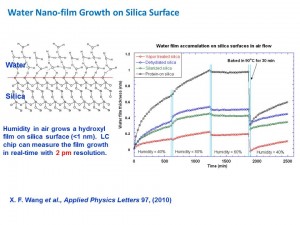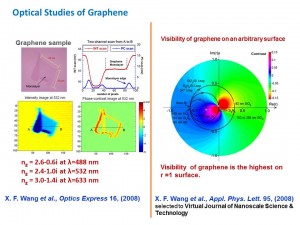Optics-based Biotechnology Development and Thin Film Analysis
I had highly interdisciplinary experience during my PhD research. The research goal was to develop optics-based methods for ultra-thin film (Thickness: pm to nm) analysis, and apply these methods to biomedical research and condensed matter study. In four years In Prof. David Nolte group at Purdue University, I developed three optics-based biosensors which enable label-free detection of prostate specific antigen in patient serum. These inventions were awarded 3 patents. I also developed a method called picometrology to study optical properties of graphene, gold and water nanofilm. Picometrology can sense thin film thickness with 2 pm sensitivity and measure its complex refractive index, with a performance superior to conventional SPR-based sensor (surface plasmon resonance).
My Ph.D. training in a highly interdisciplinary manner shaped me into a versatile researcher. I became an expert in optical instrument development, computer coding, nanofabrication, and biological and chemical analysis. Such experience is valuable for my future research.
Project 1: , inspired by fingerprints on camera lenses, I developed a label-free biosensor for protein array detection,. Click to Zoom in the pictures:
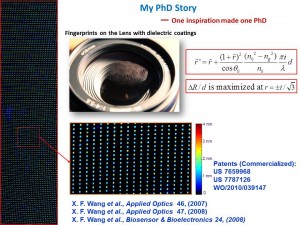
X. F. Wang et al., Applied Optics 46, (2007)
X. F. Wang et al., Applied Optics 47, (2008)
X. F. Wang et al., Biosensors & Bioelectronics 24, (2008)
Project 2: Then I applied this biosensor to detect biomarker proteins in patient serum samples and achieved clinical sensitivity (4 ng/ml of prostate state antigen in serum):
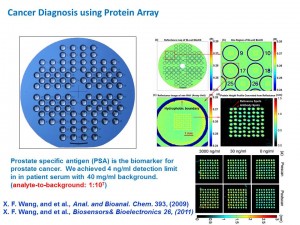
X. F. Wang, and et al., Anal. and Bioanal. Chem. 393, (2009)
X. F. Wang, and et al., Biosensors& Bioelectronics 26, (2011)
Project 3 & 4: I also developed two other biosensors for molecular interaction detection with better performance than SPR-based biosensors:
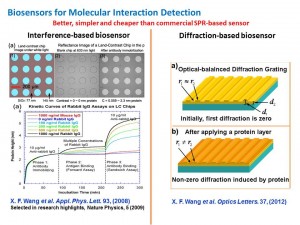
X. F. Wang et al. Optics Letters. 37, (2012)
X. F. Wang et al. Appl. Phys. Lett. 93, (2008)
Selected in research highlights, Nature Physics, 5 (2009)
Project 5: To demonstrate the capability of the interference-based biosensor, I measured the hydroxyl film growth on silica surface in real-time, achieving 2 pm sensitivity.
X. F. Wang et al., Applied Physics Letters 97, (2010)
Project 6: I also developed Picometrology for the optical property analysis of ultra-thin films such as graphene.
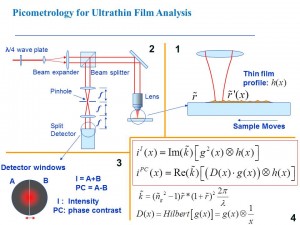
Project 7 & 8: Using Picometrology, I measured complex refractive index of graphene at single wavelengths for the first time. I also explored the optical conditions to amplify graphene visibility on dielectric coatings.
X. F. Wang et al., Optics Express 16, (2008)
X. F. Wang et al., Appl. Phys. Lett. 95, (2008)
selected to Virtual Journal of Nanoscale Science & Technology
Project 9: Picometrology was also applied to study dielectric function of ultra-thin gold film.
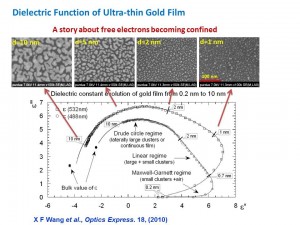
X F Wang et al.,Optics Express. 18, (2010)


